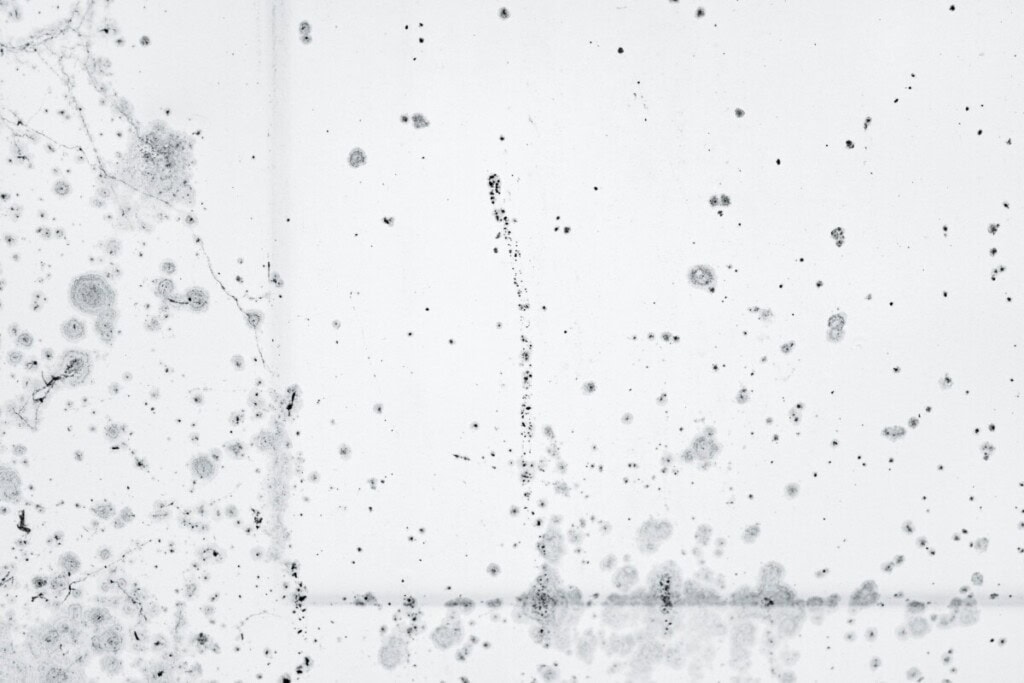Ghosting on Walls and Ceilings: What is it and What to Do About it?


Oftentimes, inspectors and contractors will receive phone calls from homeowners who describe a mold problem that has recently developed on the walls and ceilings of their homes. Usually, they describe the mold patterns as black stains or spots on the walls and ceilings that seem to follow the framing of the house.
The good news for these homeowners is that the stains are usually not mold and they are unlikely to present a health hazard to the occupants or a structural hazard to the building. The problem they are describing is called “ghosting” or “thermal bridging.” While this issue is not harmful, it can be a nuisance.
Whether you own a home in Denver, have a rental house in Tulsa, or rent an apartment in Seattle, it can be helpful to understand why ghosting on walls and ceilings is happening and what can be done to correct it.
In this article:
Understanding the problem of ghosting on walls
Steps to repair ghosting and black stains
What if my insulation needs to be fixed?
What if the black stains are actually mold?
How can I prevent mold from forming?

Understanding the problem of ghosting on walls
To visualize thermal bridging, let’s think about a home in the wintertime – say you own a house in Denver, CO. You are inside your cozy warm space cooking, cleaning, breathing, and showering – all of which create humidity inside the home. You might also be burning candles, incense, or wood for a fire.
In the winter, the insulation in your house, if it is doing its job, will help keep the cold out and the heat in. Insulation is installed in the stud bays inside the walls and on the floor of the attic. The limiting factor for most insulation is that it does not cover the wood framing of the building, just the empty spaces between the framing.
As Roseanna Martin of Hamill Creek Timber Homes sums up, “Ghosting occurs when damp air and airborne particulates, such as dust or soot, condense on drywall in streaks or lines. This phenomenon is typically caused by poor ventilation, inadequate insulation, high humidity, and airborne pollutants.”
This is what results in black sooty stains on your walls and ceilings that follow the patterns of your home’s framing. Sometimes stains can even reveal nails in a wall because the metal is more prone to becoming a condensing surface. Typically, the amount of condensation is not enough to cause a mold or structural problem, but it does create irritating lines on your walls and ceilings. So, how do you fix this?
Steps to repair ghosting and black stains
The first step you need to take to stop ghosting on walls is to eliminate indoor air particles. Stop burning candles, firewood, or incense. “If ghosting occurs in your home, clean and dry thoroughly while optimizing airflow and temperature control in the impacted area of your home,” says Tom Wilkes of Brytech Construction.
“This may include ensuring you have full and adequate coverage in your attic insulation. For humid areas in a home, like bathrooms, particularly the primary, a humidistat used with the ceiling fan is an excellent device to ensure full extraction of excess moisture and air movement.”
For more tips on cleaning, listen to Edward Steele, owner of Cleaning Buddha. “At Cleaning Buddha, we believe in keeping homes spotless without harming the planet. Ghosting on walls — those dark streaks from soot, dust, and poor air circulation — can be removed naturally with the right approach,” says Edward.
He continues, “Start by identifying the cause, whether it’s poor insulation, humidity, or airborne pollutants. Then, use eco-friendly solutions like white vinegar, baking soda, or Castile soap to gently lift stains. Prevent future buildup with HEPA filters, non-toxic candles, and proper ventilation. And if repainting is needed, always opt for low-VOC or VOC-free paint. With these simple, sustainable steps, you can keep your walls ghost-free while creating a healthier home for you and the environment.”
If you see the staining developing in larger patterns on the wall or ceiling, in places between the framing, this indicates the wall or ceiling is likely not insulated correctly. Unfortunately, the only fix is to open up the wall or ceiling and insulate it properly.
What if my insulation needs to be fixed?
If your walls or ceilings are not insulated correctly, that will require professional help, but it’s good to have a general idea of what to expect when contractors come to fix the issue.
“For finished walls, blown-in insulation is one of the most practical options,” says Justin Farrell of Rooster General Contractors. “Installers drill small holes between wall studs, typically from the inside or outside, and fill the cavity with cellulose or fiberglass insulation. This dense material helps block thermal bridging and evens out wall temperatures, reducing condensation and particle buildup.”
“If you’re doing a renovation or opening up walls, batt insulation or spray foam can be installed directly,” he says. “Spray foam is especially effective, as it both insulates and air-seals in one step, minimizing drafts.”
“Once the insulation is upgraded, clean the affected surfaces with a mild detergent, prime with a vapor barrier primer, and repaint. Proper insulation not only stops ghosting but also improves comfort and energy efficiency throughout your home.”
For new homes or major renovations, Roseanna Martin of Hamill Creek Timber Homes talks about the benefits of SIPs and tongue-and-groove paneling, “At Hamill Creek Timber Homes, we prioritize proper insulation and ventilation to eliminate the risk of ghosting. Our homes often incorporate structural insulated panels (SIPs) and tongue-and-groove paneling, which help prevent thermal bridging — the temperature differences that contribute to ghosting,” she says. “By ensuring high-quality construction techniques, we create healthy, long-lasting timber frame homes free from unwanted streaks and stains.”

What if the black stains are actually mold?
If you call a professional and determine that the black stains are mold, you have a few options depending on how severe the mold is. Regardless of what you do, it is essential that you contact an expert to assess the situation and determine the health risks.
Once you’ve done so, you can call in a cleaning company, which will scrub the infected area down with special detergents and cleaning agents. Or, if the mold is less severe, you can create a mixture of cleaning agents and scrub the mold yourself. To do this, follow the steps below:
- Create a solution that is 1/4 bleach and 3/4 water.
- Thoroughly soak the affected areas of the wall until it is saturated with the solution.
- Let the solution soak into the affected areas for 5-10 minutes.
- Scrub the affected area with a brush until the mold stains are removed.
- Repeat until stains have been cleansed.
If the mold happens to be incredibly severe, it might be worth removing that section of your wall or ceiling. “There are special products that can be used to treat this area where there is mold, and it is necessary to follow all the rules of treatment, but I would completely remove those damaged areas where there is mold,” says Andrian Lesan of LAV Spokane Painting. “In my opinion, I would always replace it.”
How can I prevent mold from forming?
To prevent mold from forming, check out the following tips:
- Make sure to run your bathroom’s fan while bathing and after to prevent moisture from accumulating. If possible, shower with the door open to encourage circulation and proper ventilation.
- Mop up any significant spills from water or other liquids quickly.
- Use mold-resistant paint in bathrooms and other rooms where there is significant moisture.
- Clean your bathroom frequently.
So, the next time you notice black stains in your own home or in homes on the housing market you are considering purchasing, don’t panic. Ignoring ghosting can lead to bigger problems down the road, including mold or structural damage. That’s why regular property inspections are crucial.
According to Concept 360 Property Management: “Regular inspections are like catching little issues before they become big, scary messes.” By staying on top of minor issues like poor air circulation or water leaks, you can avoid the costly repairs that come with mold or wall deterioration. A simple inspection can catch these signs early, saving you time, money, and headaches in the long run.
The post Ghosting on Walls and Ceilings: What is it and What to Do About it? appeared first on Redfin | Real Estate Tips for Home Buying, Selling & More.




